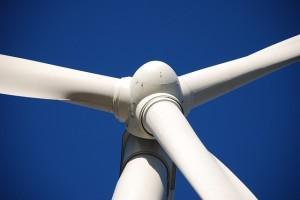 In the months following the March 2011 earthquake that devastated Japan’s northeastern Tohoku region, Japanese government leaders pledged as part of reconstruction efforts to rebuild several of the most heavily affected towns as “Future Cities” and “eco-cities,” smart communities incorporating cutting-edge renewable energy and environmental technologies. In addition to making these communities more self-sufficient in meeting their energy needs and reducing their carbon footprints, this initiative envisions the creation of new jobs related to green energy and related opportunities for community revitalization in areas that were already facing economic difficulties and population declines before the disasters struck.
In the months following the March 2011 earthquake that devastated Japan’s northeastern Tohoku region, Japanese government leaders pledged as part of reconstruction efforts to rebuild several of the most heavily affected towns as “Future Cities” and “eco-cities,” smart communities incorporating cutting-edge renewable energy and environmental technologies. In addition to making these communities more self-sufficient in meeting their energy needs and reducing their carbon footprints, this initiative envisions the creation of new jobs related to green energy and related opportunities for community revitalization in areas that were already facing economic difficulties and population declines before the disasters struck.
These projects, including one collectively being pursued by the neighboring towns of Rikuzentakata, Ofunato and Sumita, are still in the initial stages of development, and much is riding on their outcomes. For in addition to generating new local vitality, key policy stakeholders in Japan will also be looking for whether these projects generate systems, models, and technology solutions that can be disseminated to other communities, in Japan and more broadly.
These efforts to take a sustainable approach in rebuilding communities in Tohoku also present a valuable opportunity for new collaboration between Japan and the United States on a topic important to both countries. Announced as part of a wide-ranging set of joint initiatives when U.S. President Barack Obama and then-Japanese Prime Minister Yoshihiko Noda met on April 30, 2012, was the Tohoku Green Communities Alliance. As part of this initiative, the two governments agreed to cooperate in promoting the building of green communities in the Tohoku region, including through people-to-people exchanges, joint research and development activities involving institutions located in Tohoku, and collaborative government-industry partnerships to develop and deploy micro-grid systems. Through these activities, the two governments aim to build upon experiences gained and incorporate the lessons learned from them in similar projects in other communities. This initiative is being carried out as part of the broader U.S.-Japan Clean Energy Policy Dialogue, and the exchange program coordinated by the TOMODACHI Initiative, a U.S.-Japan public-private partnership working to support recovery activities in the Tohoku region and further strengthen ties between people in both countries.
The first exchange through the Tohoku Green Communities Alliance took place last November, when a delegation of Japanese local government officials visited the United States to learn about U.S. experiences with incorporating green solutions in disaster recovery activities and to share information and ideas. Included in the delegation were leaders from Rikuzentakata in Iwate Prefecture; Watari, Natori, Soma, and Minami-Soma in Miyagi Prefecture; and Shinchimachi in Fukushima Prefecture—some of the communities hit hardest by the tsunami, and exploring or moving forward with “eco-city” projects. During their visit, the delegation visited Greensburg, Kansas, where community and civic leaders came together to pursue a green and sustainable approach to rebuilding after ninety-five percent of the town was destroyed by a tornado on May 4, 2007. Delegation members also visited the U.S. Department of Energy’s National Renewable Energy Laboratory in Colorado to learn about the agency’s experiences with sustainable community development in the United States, including related to disaster recovery efforts.
While still at an early stage, the Tohoku Green Communities Alliance presents a valuable platform for local communities in both countries to interface, share best practices, and learn from each other’s experiences in designing and implementing smart community agendas incorporating sustainable practices and renewable energy technologies. Although the initial focus of this initiative is on communities in Japan’s Tohoku region, other cities and towns all across Japan are implementing “eco-city” projects and experimenting with smart community and grid development. Facilitating opportunities to bring together these communities with U.S. cities pursuing similar approaches offers strong potential for encouraging new collaboration, ideas-sharing, and possibly local economic development.
Image Source

